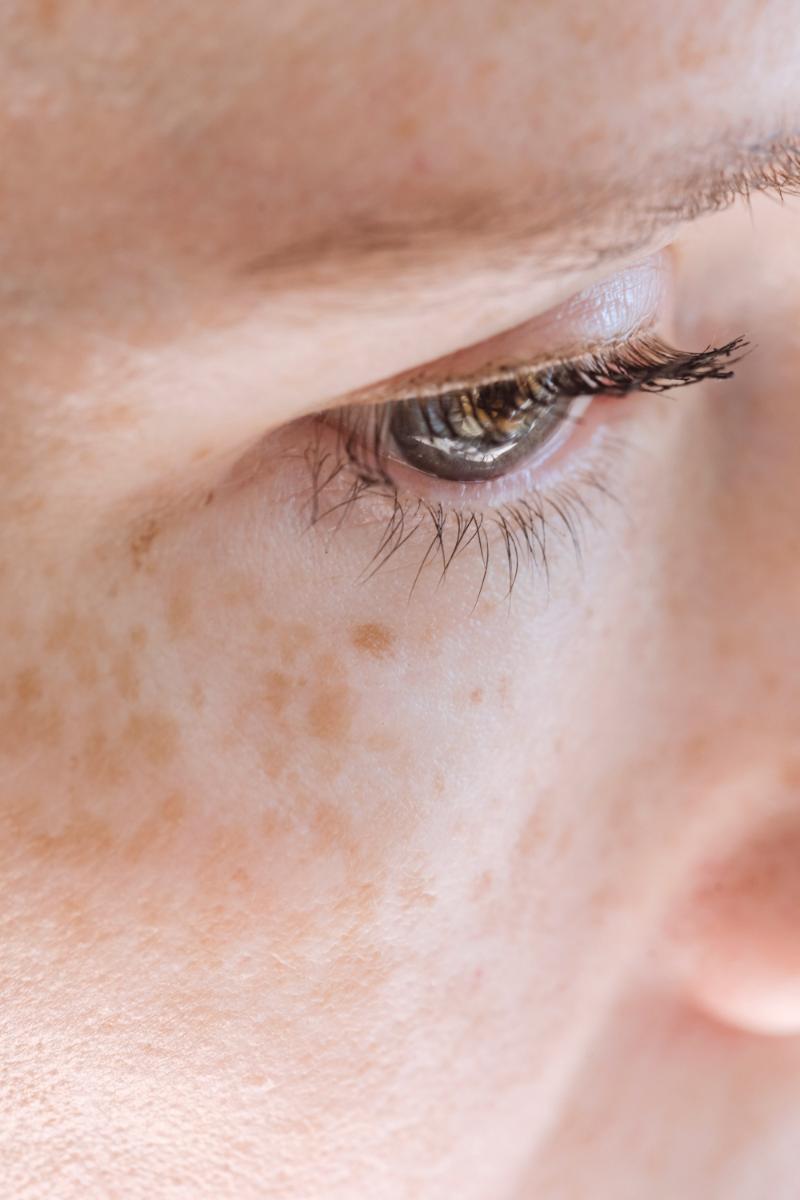Skin pigmentation disorders may not be as widely recognized as some pediatric conditions, but they significantly impact the lives of many children. These conditions include a range of conditions that affect the natural coloration of a child's skin.
These skin concerns can leave distinctive patterns or discolorations on the skin, impacting the child’s physical appearance as well as their emotional well-being and self-confidence.
At Robertson Pediatrics, we bring a wealth of experience and expertise in the field of pediatric dermatology. We’re a trusted name in pediatric care and are committed to providing expert guidance and support for young patients with skin pigmentation concerns.
There are multiple types of skin pigmentation disorders, each with its unique characteristics and impact on a child's skin. At Robertson Pediatrics, we believe that understanding these disorders is essential to providing the best care and support for young patients.
Vitiligo, pronounced "vih-tih-LY-go," is a skin condition caused by an autoimmune disorder. It is characterized by the loss of skin pigment, resulting in the formation of distinct, often irregular, pale patches.
While vitiligo can make children self-conscious about their appearance, this condition poses no medical risk. Vitiligo is a non-infectious condition and cannot be transmitted from one person to another.
Skin color is determined by the activity of specialized cells called melanocytes located within the skin's outermost layer (the epidermis). Melanocytes produce melanin, which determines the color of the skin.
In children with vitiligo, melanin production is disrupted in some areas, leading to the emergence of macules - pale spots noticeably lighter than the surrounding skin. Vitiligo can appear anywhere on the body but is more likely to occur in areas exposed to sunlight, such as:
- Face and hands
- Skin creases like the elbows, knees, or groin
- Skin surrounding body orifices, such as the eyes, nostrils, belly button, and genital area
In some cases, children with vitiligo may experience other symptoms, such as premature graying of the hair or depigmentation of the lips, as pigment cells are also present in these areas.
Vitiligo Diagnosis & Treatment
A visual assessment is often sufficient for your child’s doctor to confirm a vitiligo diagnosis. A skin biopsy may be recommended when the diagnosis is uncertain.
While vitiligo currently has no cure, various treatment options are available to manage the condition and improve the appearance of the affected skin.
- Topical Corticosteroids
- Topical Calcineurin Inhibitors
- Narrowband Ultraviolet B (NB-UVB) Phototherapy
- Microskin and Dermablend
- Counseling and Support
Early diagnosis and treatment can play a crucial role in managing vitiligo in children. The choice of treatment depends on the child's age, the extent of vitiligo, and individual preferences.
Albinism is a genetic skin condition characterized by a lack of pigment in the skin, hair, and eyes. The absence of pigment is primarily due to a defect in melanin production, which plays a pivotal role in determining skin, hair, and eye color.
Children with albinism often present with very fair skin, white or blond hair, and pale blue or pinkish eyes. The lack of melanin also makes their skin highly susceptible to sunburn and damage from ultraviolet (UV) rays.
Although albinism does not pose direct health risks, the absence of melanin can lead to visual impairments, as melanin is crucial for the development of the eyes.
Albinism Diagnosis & Treatment
Albinism is typically diagnosed through a physical examination and genetic testing. Early diagnosis is essential for providing appropriate care and support.
Treatment mainly focuses on sun protection, visual aids, and periodic eye examinations.
Eye care for children with Albinism includes:
- Regular ophthalmologist visits
- Protective eyewear to protect eyes from harmful UV rays
- Treatment for eye conditions like nystagmus (involuntary eye movement)
Skin protection for children with Albinism includes:
- Applying broad-spectrum sunscreen with a minimum SPF of 30
- Seeking shade whenever possible
- Using sun-protective clothing and hats
- Scheduling regular skin checks
Nevus Depigmentosus is a congenital skin disorder characterized by the presence of pale, depigmented patches on the skin. It's important to note that nevus depigmentosus differs from vitiligo in that the former is present from birth, while the latter is an acquired skin condition that may develop over time.
Additionally, while vitiligo can cause the loss of pigment in a widespread manner, Nevus Depigmentosus is usually isolated to certain areas. These patches are typically lighter than the surrounding skin and often have irregular borders.
While this condition is generally benign and does not lead to health complications, it can be a source of cosmetic concern for some children and their families.
Nevus Depigmentosus Diagnosis & Treatment
Diagnosis is primarily clinical, relying on a dermatologist's visual assessment. The doctor will look for:
- White patches seen from birth or infancy
- Patches stay unchanged and do not grow with age
- Unchanged texture or sensitivity of the affected area
- Absence of a hyperpigmented border surrounding the white patch
There are generally no specific treatments required for Nevus Depigmentosus, but topical corticosteroids or other cosmetic options may be considered for cosmetic purposes.
Café au Lait spots are common birthmarks characterized by their light to dark brown coloration and relatively uniform shape. These spots may appear at birth or develop during early childhood.
These tend to have a distinct appearance on the skin, which makes them different from other birthmarks. This includes:
- Flat spots on the torso, arms, legs, and buttocks
- Spots that are light brown to dark brown in color
- Round or oval shape spots that are 2 mm to more than 20 cm in diameter
- Spots grow with age in number or size
- Painless spots that do not cause itching
- Spots have smooth or rigid border
While they are usually harmless and painless, the presence of multiple Café au Lait spots can sometimes be associated with certain underlying conditions, such as neurofibromatosis.
Café au Lait Spots Diagnosis & Treatment
Diagnosis is often made through visual examination by a pediatric dermatologist. However, if multiple spots are present or other concerning symptoms arise, further medical evaluation and diagnostic tests may be recommended.
In most cases, Café au Lait spots do not require specific treatment, as they are benign and do not pose health risks. If your child would like them removed for cosmetic reasons, talk to your provider about laser treatment options.
Dermatological conditions, such as vitiligo, albinism, nevus depigmentosus, café au lait spots, and other less common disorders, require a unique and comprehensive understanding of the intricacies of pediatric skin health.
At Robertson Pediatrics, we are committed to delivering the highest standard of care, tailored specifically to the needs of our young patients.
We will work with you to find the best treatment for your child’s skin! For appointments, please call Robertson Pediatrics at 310-659-8687 or contact us online.


